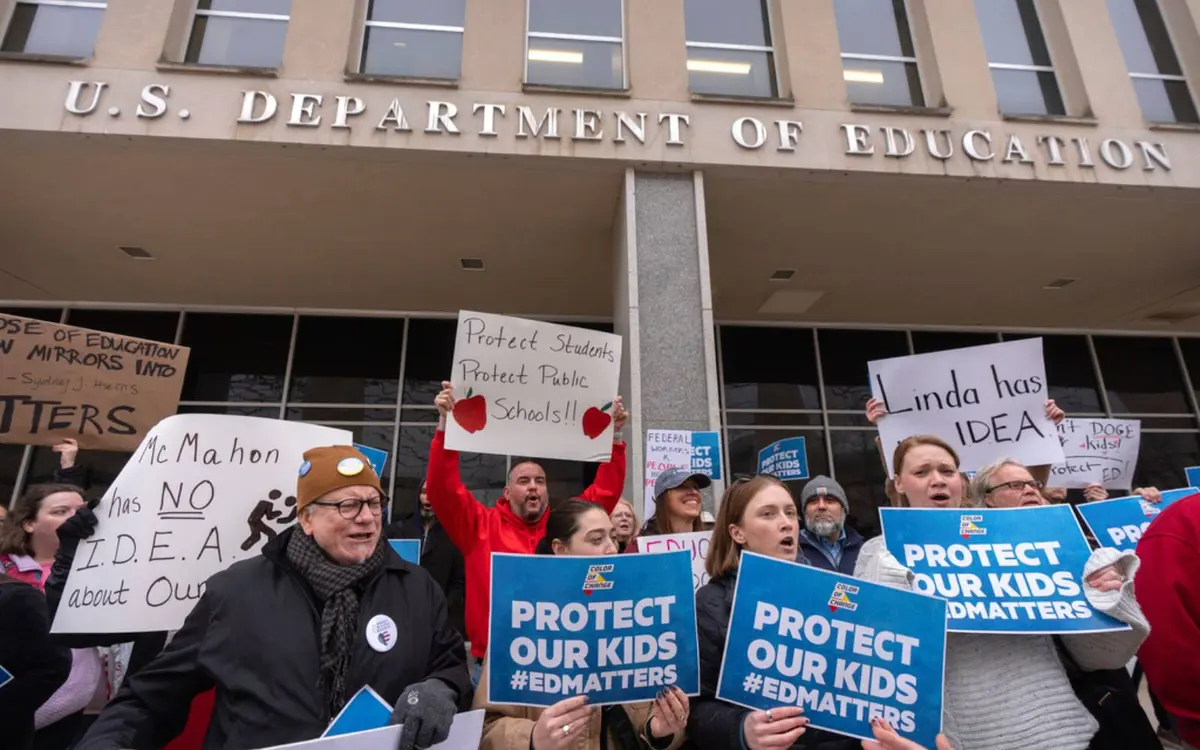In October 1979, the late and previous U.S President Jimmy Carter signed into law the Department of Education. He wanted to strengthen the federal government’s commitment to ensuring access to equal educational opportunities for every individual in the U.S. With his support, students were able to pursue education with their schools getting resources to supply them the basics of learning, equal rights, loans for students with a low-income background and more.
President Donald Trump signed an executive order on March 20th 2025 calling for the dismantling of the Department of Education. This is one of many promises Trump made during his campaign for his second term, and now he’s trying to push the executive order to Congress.
“Since then, the Department of Education has entrenched the education bureaucracy and sought to convince America that Federal control over education is beneficial. While the Department of Education does not educate anyone, it maintains a public relations office that includes over 80 staffers at a cost of more than $10 million per year,” stated Donald Trump.
Trump’s call for the abolishment of the Department of Education seems to be influenced by the idea that taxpayer money is being spent carelessly with no improvement in the education system but setbacks with learning.
“Not only is the U.S. failing in education on the global and national stage, but also per pupil spending has gone up by more than 245 percent since the 1970s, with test scores rising less than 2 percent. The federal government is great at spending money but gets a failing grade for academic achievement,” stated blog writer,Christina Smith.
Despite this, with the influence of the department on American education, millions of students will be affected negatively. There will be less resources for those with disabilities, programs granting federal loans for low-income college students will be cut, more discrimination allowed, and giving more power to the states. Low-income states like Mississpi, West Virginia, and Arkansas having power over their state education will struggle to provide adequate resources for their education systems.
Around campus, students are against Trump’s proposal.
“It’ll set back a lot of students from pursuing their education and cause kids to drop off because of not enough resources being given to them. With the abolishment, kids with disabilities and the removal of civil rights protecting kids from racist remarks or unequal treatment will be having negative setbacks,” expressed Castaic 9th grader, Kevin Pallete
In 2024, the department spent a total of 150.3 billion on secondary and primary schools. However, if Trump gets his way of abolishing the department of Education and states get control, funding will be lost. This will lead to budget cuts, reduced resources, and decreased quality of states.
These possible outcomes left many students worried for the future if it gets approved.
“I think that it’s unfair and everyone should be given the same opportunity in their career choice no matter their background or race. They should make it fair by giving them a different kind of education that will ensure everybody gets education with core resources but with addition will their learning style,” voiced Castaic 10th grader, Ella Vulich
Regardless of Trump’s proposal, the only way for it to get passed is for it to get approval through congress.
It’s uncertain that he’ll get the green light due to his proposition of spending cuts and government restructuring. Only the future will tell.









